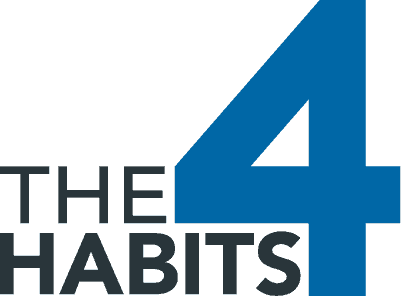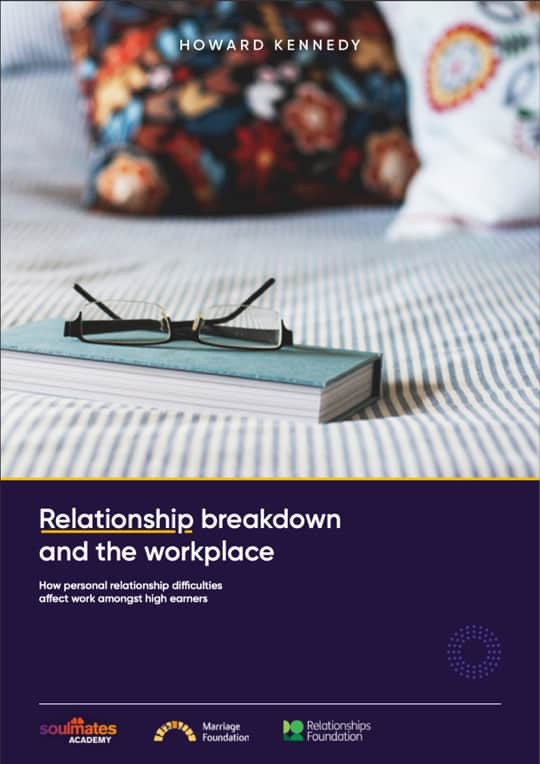When I mention in conversation that my husband and I both work from home a lot, I usually get one of two responses: either envy; that we get to enjoy a cushy life of pyjamas and tracksuits, no strict schedules, and the joys of daytime sex(!), or concern; expressed as “I don’t know how you guys do that, we’d kill each other if we were both home all day, every day”! True, there are huge advantages to working together from home but wearing chill-out clothes with no strict schedule is seriously over-rated. The freedom to set your own schedule also requires a serious amount of self-discipline in order to generate the income that affords the luxury to continue. Also, being under the same roof 24/7 comes with its own challenges…
We are not alone – the trend for one or both partners to work from home is definitely on the rise. More and more companies are trending to allow some, if not all, of their employees the flexibility to work from home (WFH), at least some of the time. And the pressure for the trend to continue seems to be coming from employees as well.
In their quest to improve work-life balance, more and more employees are asking for the flexibility to work from home (at least some of the time), especially where they have young children. A 2017 PowWowNow survey revealed the following stats:
- 67% of employees wish they were offered flexible working,
- 58% of people believe that working away from the office would help them become more motivated,
- 40% of people would choose flexible working over a pay rise if they could only choose one.
A recent Forbes article concluded that “most people are more productive when working from home… take fewer sick days and less vacation time”. A Global Workplace Analytics and FlexJobs report quoted in CNN Money concluded that “working outside the office allows employees to have “better work-life balance and improves their health and wellness”. Given these benefits, the pressure from employees for WFH opportunities is likely to continue to increase, especially given the expectations of flexibility held by the Millennials (and Generation Z who will soon join the workforce).
Employers, for their part, recognise that once they can get over the challenges associated with having their employees work remotely – usually involving issues around maintaining cohesion/team, accountability, communication and information security – they stand to gain from a number of both hard and soft benefits including:
- Cost savings on office space and other facilities,
- Improved candidate attraction and access to a wider pool of applicants – the same PowWowNow survey revealed 70% of workers feel that offering flexible working makes a job more attractive to them,
- Improved employee retention (with enhanced engagement coming from the perception of a better work-life balance).
However, while much attention has been given to the technology that supports remote working and virtual collaboration, more thought needs to be given to supporting the resulting “invasion on home life” to make it a sustainable proposition for the long haul.
One of the often-cited issues of working from home is the “strain on home relationships” typically arising because of a partner who is physically present but unavailable, and/or who brings work stressors visibly into the home, and/or causes work to bleed into the home life beyond expected working hours. However, the biggest strain on relationships occurs when it throws couples together for more days and longer periods during the day than existed when one or both worked in an office. This is why some people opt not to work from home when given the choice.
Years ago, at the start of our married life together, Jon and I had the privilege of working in Japan for a year, away from family, friends and our natural social network. Jon worked long hours in investment banking and I was often away on assignments during the week in my role as a management consultant, so we made the most of evenings and defended our weekends to create real quality time together. We explored and experienced life in a foreign country together and felt so close that, being convinced we knew each other inside out, we decided to flex our entrepreneurial muscle and start a business together on our return to the UK. That is when all hell broke loose. We knew each other socially, but we never actually worked together before and discovered to our horror that we had very different and seemingly conflicting work styles. Jon’s desk was tidy and in neat piles; mine – well calling it organised chaos was a euphemism. He paid close attention to detail and follow through; I was great on the ideas and creativity but was off to the next thing before the idea was fully delivered. The tension built quickly because now the family income depended on us getting it together, or abandoning our dream of building a business and going back to finding day jobs. It was through this make-or-break experience that we discovered the three essential principles which made working together as a couple a viable option and allowed us to run a business together successfully for ten years, initially working from home and then ultimately from central London offices. The learning from this experience gave us the confidence and skills to now be working from home again, together 24/7 on the Soulmates Academy relationship education venture, and still be alive to tell the tale!
The 3 Key Principles for Work-From-Home Success
These three principles are vital to the success of relationships where either one or both partners WFH, where the level of interaction between partners is increased as a result. Companies that support their WFH employees in understanding and applying these principles will reap the intended benefits and help ensure the arrangement can be sustained for the long haul.

Principle 1: Become a “high-performance team” of two
Quite often the misunderstanding and tensions that can be created in any relationship between two people – colleagues at work or partners at home – come from the default assumption that everyone thinks like us, so if someone happens to do something unexpected or annoying, we think it was done purposely to irritate us! Wouldn’t it be great if the world had time to pay attention to our individual likes and dislikes in that way! Logically we know we are different people but somehow, we don’t expect differences to show up in our interactions.
It’s simple really… the main challenge of the WFH scenario is that interactions between partners increase.
Their previously contained work life spills over into home life and vice versa, so there are more occasions to interact and more things to interact about. No surprise that conflicts can flare up often. And because the relationship is far more familiar at home, the professional guardrails (needed in the office environment to come across as a “nice person” to keep the job/role / reputation) are down, so conflicts can be more intense and unedited. This is one of the reasons why those who are against working from home choose not to – the additional pressure placed on the emotional connection in the relationship at home, for them, is just not worth it.
However, as companies are also discovering…
…the innovation and creativity needed to survive in the new global workplace will have to come from people who know how to pull together on the same side…
harnessing each other’s strengths, compensating for each other’s weaknesses and maintaining strong commitment until clearly articulated goals are achieved. In order to build these “high-performance teams” in the corporate world, personality profiling is often used to identify each team member’s personality strengths and natural tendencies, thereby highlighting the unique contributions each person makes to the team. Profiling also helps highlight individual weaknesses and likely responses under pressure, so that team members can work together, compensate for each other and be more gracious in helping each other through tough times.
Shortly after the tensions started in our working together, by chance we came across a simple, easily understood personality profiling model that was so intuitive we got it in a heartbeat and experienced lightbulb moments as we realised the things that irritated us most about each other were our strengths gone a bit out of balance. Like many professionals, we had each done various personality profiles in separate work contexts, but doing the same, simple model together gave us a common language for creating mutual understanding and describing our experiences in a way that made sense to both of us. This created a huge sense of renewed respect for each other – and ourselves – and started to diffuse a lot of the tension around how we were perceiving behaviours. In fact, the impact was so significant for us, we became evangelistic about relationship education and this experience became the catalyst for the work we now do in supporting marriages and committed relationships. The personality profile model we use is so easy to understand that couples get it straight away and can even teach it to their children to increase their level of patience and understanding at home.
What if, as a pre-requisite in the move to work-from-home, companies offered this coaching to help partners appreciate each other’s differences and tendencies and really pull together to integrate the new work pattern into their financial, career and other lifestyle goals important to them? The cost of such a programme would be well worth the investment to achieve the success of work-from-home initiatives. Of course, the benefits of the skills and understanding developed would benefit all other relationships within the corporation and in life in general too.

Principle 2: Strengthen Communication & Conflict Resolution skills
Once differences are understood, it is usually easier to agree roles and responsibilities based on strengths and what each person can do with ease, as well as their availability to do it. Until then, dividing chores and responsibilities at home is potentially rife with conflict, generally around unmet expectations coming from different family backgrounds and frustrating gender stereotypes.
Tensions at home can run so high, and of course are so much more visceral, that potentially more stress is created than mitigated by working from home. Where these conflicts go unchecked, companies may be at risk of “remote-presenteeism” – where employees are turning up to their remote desks but are emotionally a million miles away and unable to focus on the job.
Being able to have a meaningful conversation around strengths, what works for each household, and the extent of the flexibility to help create more balance and support with home life goes a long way to experience the improved work/life balance that working from home offers.
When conflicts do arise, each partner can interpret their experience through a better understanding of their partner’s perspective and what makes them tick. Mutual respect for the fact that Work From Home means exactly that – working from home – and treating each other with respect when in the middle of deep thinking, calls or other activity, will go a long way to making communication at home smooth and mutually supportive. However, strengthening communication skills with an understanding of conflict resolution styles and learning how to listen well, reflect back, and seek first to understand and all those great communication disciplines will again strengthen the relationship at home and create more harmony and success in the work-from-home experience.
Organisations that make the effort to pay as much attention to building emotional connections at home as they do to the technology that supports building relationships remotely will reap huge benefits from the emotional resilience developed through strong relationships at home as well as realising all the expected benefits from the work from home arrangements.

Principle 3: Master Prioritising and Scheduling
One of the huge benefits of WFH is the privilege of designing your ideal day and living to your values, while having the mental space to be creative, fully productive and achieve more than you would with the distractions and interruptions of office life. However, that freedom comes from discipline, which almost feels like an oxymoron. Yet as Zig Ziglar famously quotes, “If you do the things you need to do, when you need to do them, someday you can do the things you want to do when you want to do them.” Working from home successfully requires great discipline around prioritising and scheduling, but most of us tend to learn this more through the pain of getting it wrong than through the wisdom of being shown how upfront.
This is another area where organisations can be proactive in helping prepare their employees for success in working from home, especially in this age of interruptions from the very technology that is meant to increase productivity and connectivity. The unending pings and alerts from our smartphones, laptops, computers, and tablets mean we could spend our lives as slaves to the demands of OPA’s – other people’s agendas – whether it’s a crucial message or an announcement of a sale by a company you’ve never heard of, about products you neither want nor need. Being home also brings additional distractions of meals, school runs, parents needing support, gym workouts, laundry, cooking and other household tasks. Learning how to create a schedule which reflects key values and priorities, keeping yourself accountable and on the task on a daily basis and getting back on track when things go awry should be part of the self-development toolkit given to employees ahead of their transition to WFH, even ahead of getting the laptop and broadband connections.
Being able to create and work this schedule will help employees communicate their core work times, when they’re available and when they’re not to their nearest and dearest to prevent unnecessary conflict over unmet expectations on either side. It will also mitigate against the challenges of not knowing how to stop working and have family time or just relax, which many people who work from home suffer.
So, if at its core, WFH means having the flexibility to maintain work productivity levels while being able to do school runs, go to the gym, support elderly parents or pursue a passion (like writing etc.), learning to work with a general schedule of what an ideal week looks like (with time allocated for work, family, fitness, children and all the things that are priorities) will unlock the “reduced stress, increased productivity, and better work/life balance” promise of the WFH experience.
But for most people, this discipline will not develop automatically so companies need to be proactive about helping employees build these skills to make the transition successful. For a template and guidance on how to create a schedule based on an individual’s specific values and priorities, you can view our blog post about this here.
Concluding thoughts…
Long commutes, global teams, the expectations of generation Z, and the unpredictable VUCA environment – there are many reasons why working from home will remain a worthwhile arrangement for organisations to pursue for time to come. However, for both employers and employees to gain the potential benefits from the WFH organisational design, companies need to be proactive in preparing their people for the increased demands on their relationship skills in the new home/work environment.


